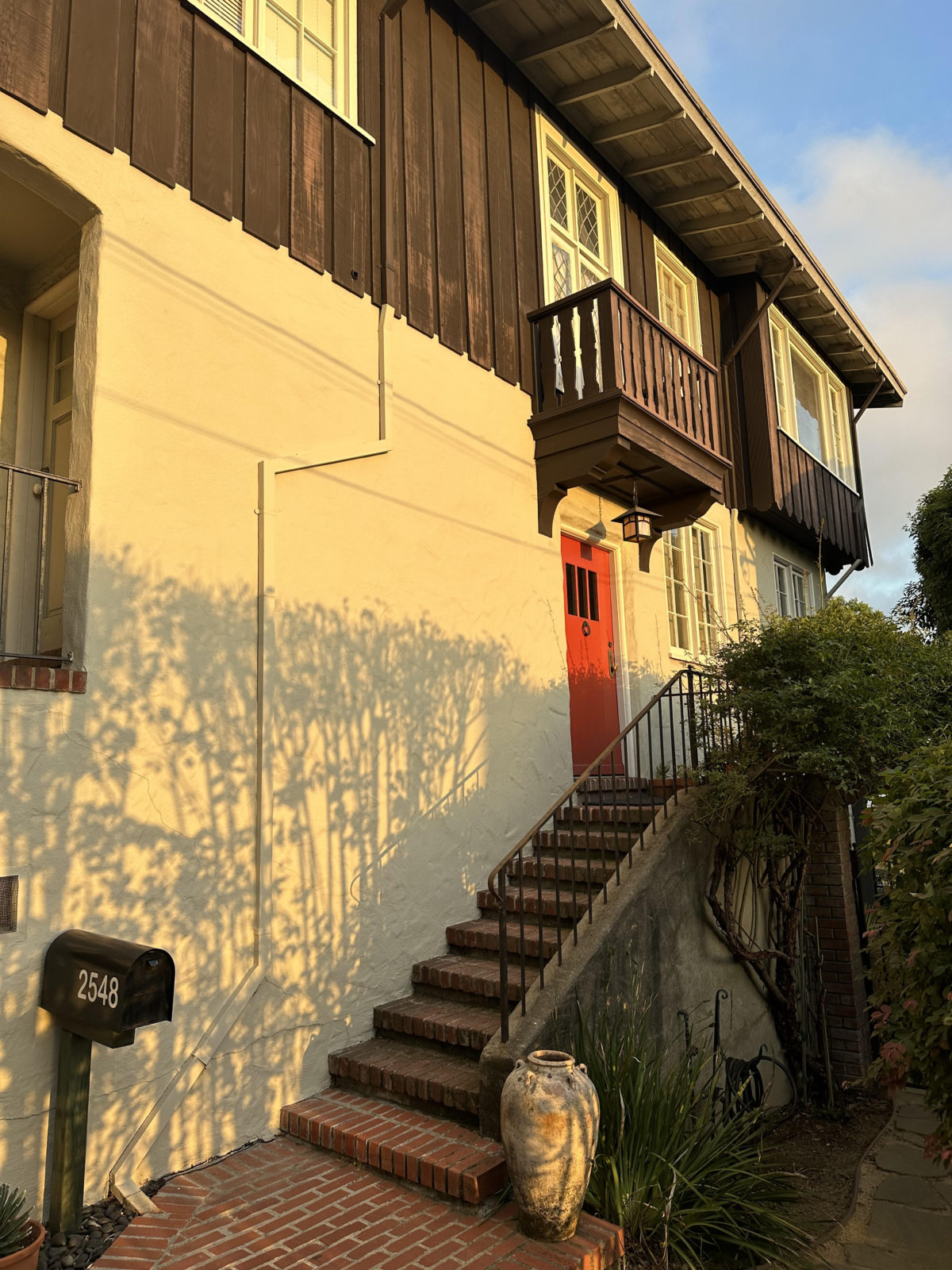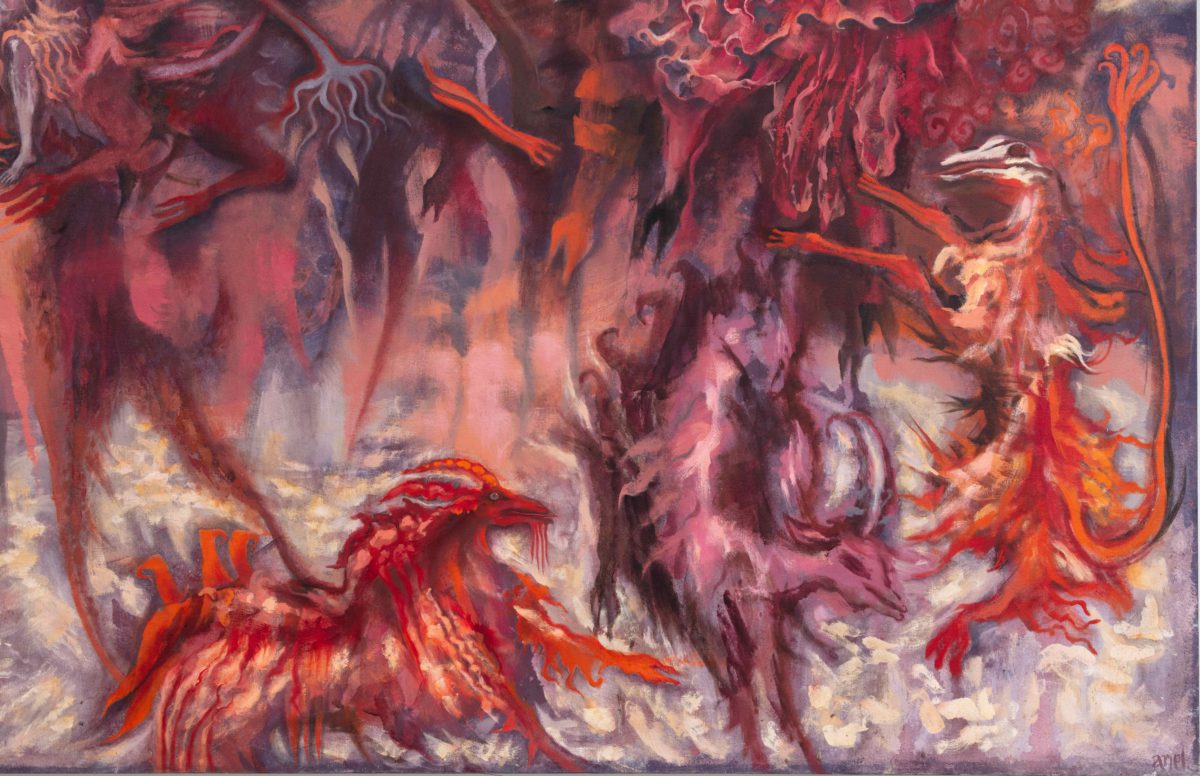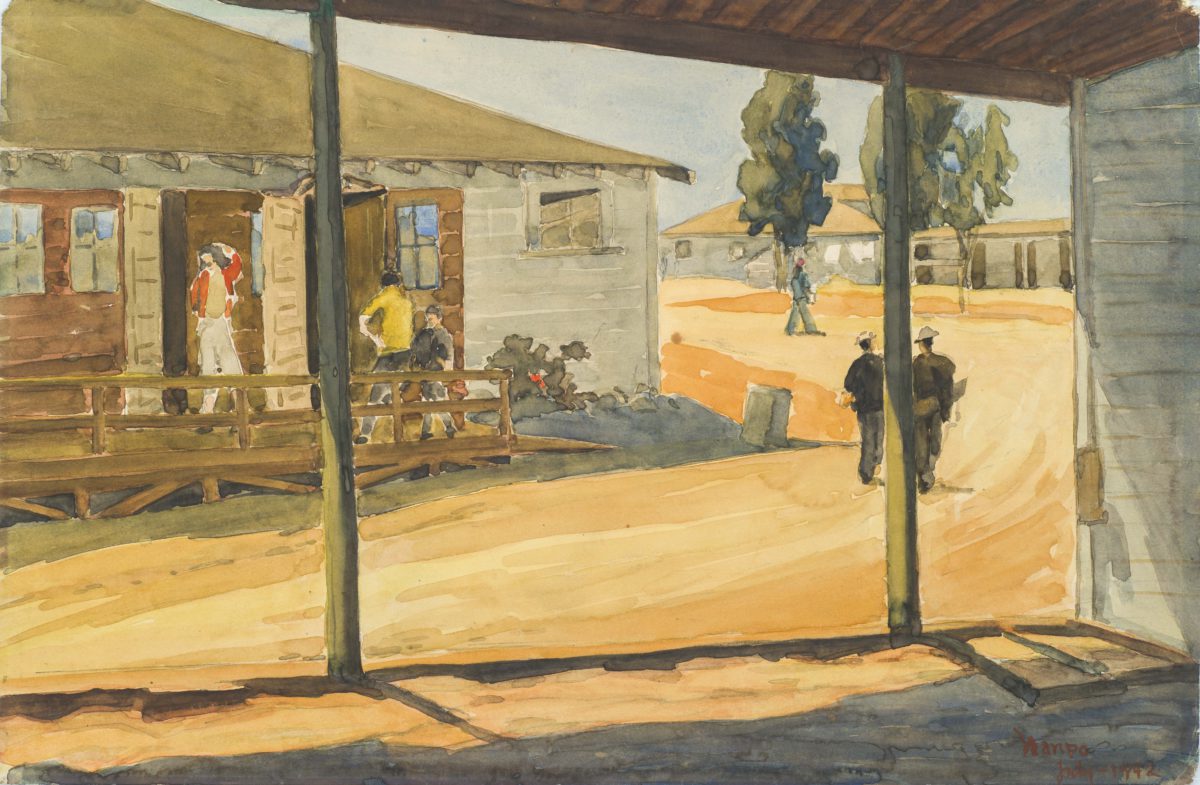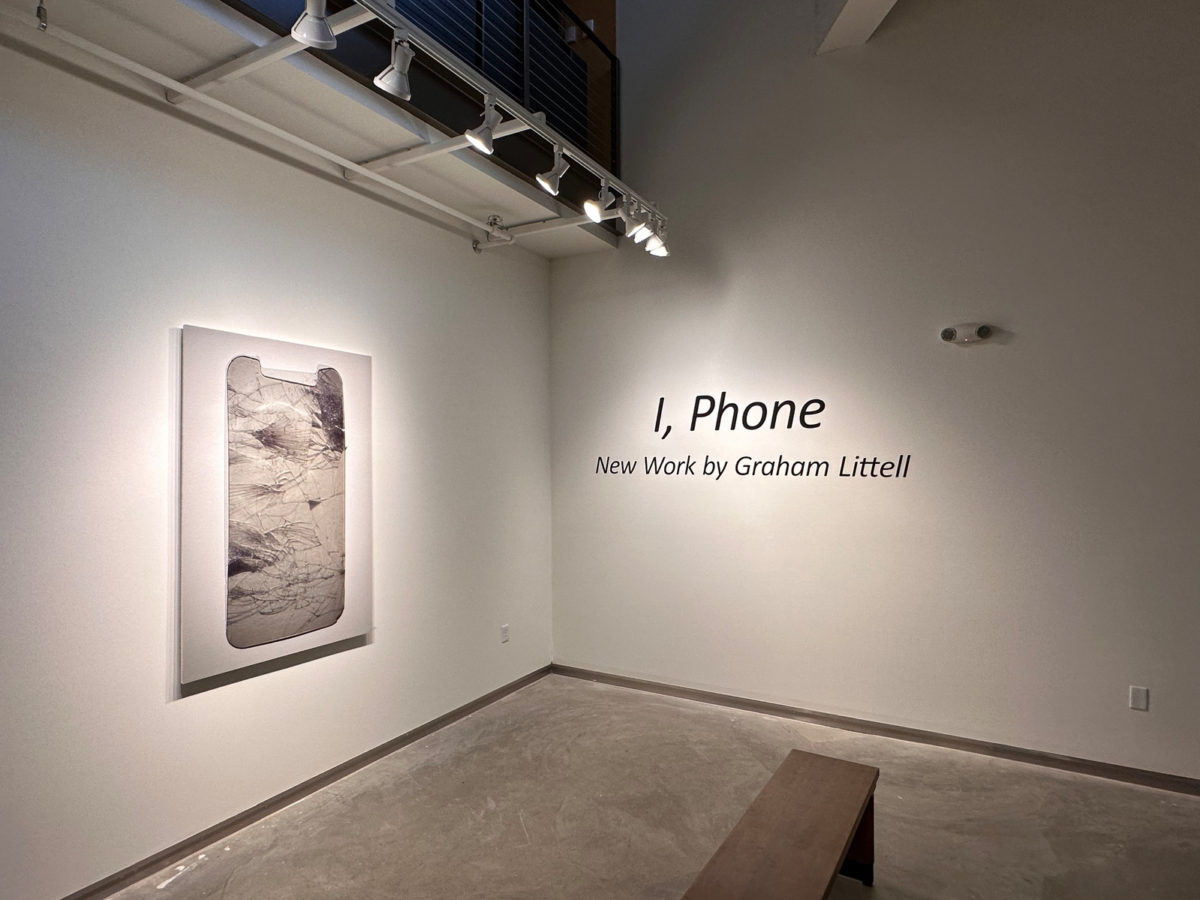
PEEL THE PROTECTOR OFF THE PHONE, take a photo of it, blow it up, print it, and hang it on the wall. That’s what Graham Littell has done in “I, Phone,” his latest solo show. He’s done it eight times with eight glass protectors and the effect is fantastic: If you walked inside the Schmidt Gallery at Principia College last month, you could have been in a cathedral with screen protectors for windows. Look in the windows and you would have found a lens into the life of the modern mind—broken, cracked, and confidently falling apart.
“I thought about exhibiting the screens by themselves,” Littell told me in a recent phone call about the show, “but they needed to be blown up to human scale for accessibility.” They’re more than accessible. 60 inches by 40, they’re dizzying, ghostly, delightful. Take Dammy, 2023, named for the screen protector’s former owner and the year he let it go. Here, as in each of the blown-up photos, the protective glass—usually a small thin skin on the phone display—becomes a soaring, semi-translucent canvas of cracks, crevices, and vagabond lines. These lines transmit action. The action recalls memory. The memory of a phone falling to earth.

Dammy, 2023. Archival Inkjet Print, 60″ x 40″ 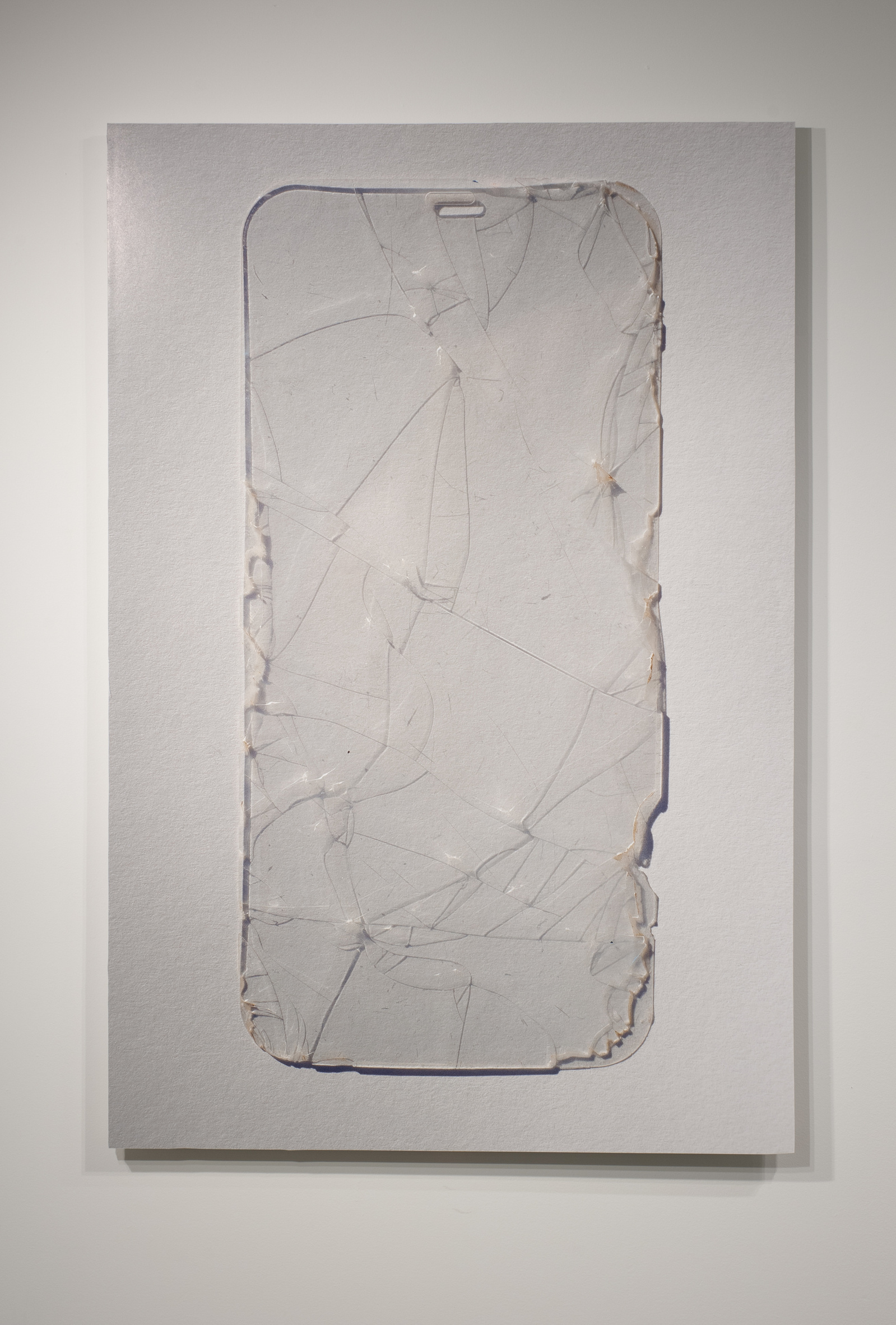
Nick, 2023. Archival Inkjet Print, 60″ x 40″
Something else is going on. These are photos, sure. Photos of screen protectors which, covered to Hell with splits and rifts, take on the quality of a canvas. But the real canvas—the iPhone that these things served and protected—is missing. What we’re looking at—what these photos of chunked glass reveal—is the absence of the phone. The source, the power of modern life is gone, and what we are left with is, essentially, a broken shield. These shields loom large in the vacuum of the absent phone. They hang without the phone. Without us.
Designed by Apple in California, this vacuum is prettier and shapelier than most, and sharp. Look at Nick, 2023 and follow the outline of glass until you land, right hand down, on a sad, serrated edge. You could cut wood with this. Bread. The skin above your thenar muscles. I think of pockets. Thumbs. The right thumb—Nick’s? Mine?—shuffling across the screen, in pursuit of—love, cash, KFC? “The areas where you swipe,” Littell said of the physical screens he collected (not included in the show), “are minefields. Glass literally in your thumb.”
On the topic of how we live our lives, glass in thumb is up there with finding friend with thumb and ordering food with thumb. But that’s not what interests Littell. He’s interested in beauty. Not the beauty of the lines on the screens—although they are, in their own electric way, idiosyncratic and abstract—but the search for beauty through the phone, a search evident in the other photos in the show: a 7/11 sign at night, a woman sitting in a tram, a plastic bag on the wall, all shot on an iPhone. “We are living through the phone,” he told me. “We are using our phones to think. This act, this pursuit of beauty is taking place through the phone screen. My interest is in the play of photos and phone. I’m trying to overlap and fold things into each other. That’s how thought operates.”
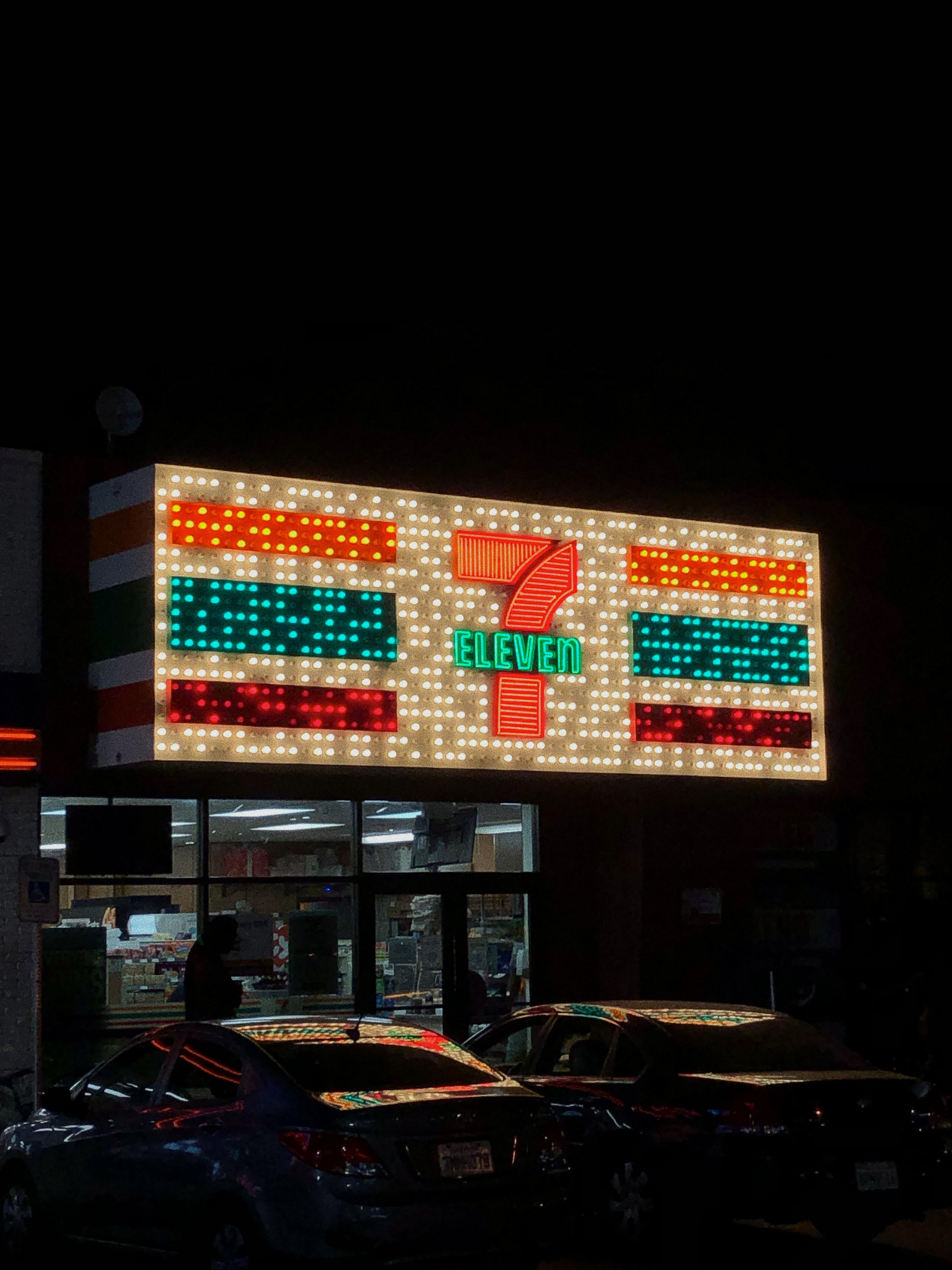
Downtown Las Vegas, 2022, digital photograph. 
Tram from Anděl, 2019, digital photograph.
In the gallery, Littell’s photographed screens fold into the photos shot through the screen. Like birds against the wind, they hover above a no man’s land of iPhone proportions. All they carry are surfaces of scars. Littell has saved these scars and held them up to a new light. There’s something reverent, even religious, about all these layers. The screen’s protector—its image—is elevated to the status of artwork. Gone is the phone that brought it into being. Gone is the god of our time.
“I, Phone: New Work by Graham Littell”
January 23 to Feb 2, 2024
James K. Schmidt Gallery, Voney Art Center
Principia College
Elsah, Illinois

